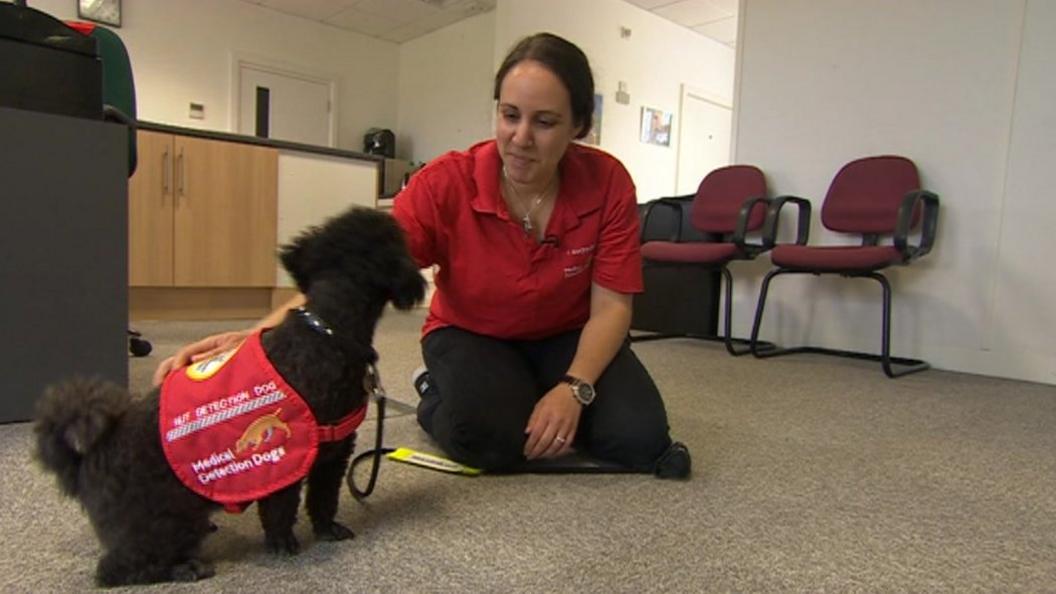Guide dogs: Where do they really come from?
- Published

Guide dogs are like politicians or Santa Claus: it's a bit hard to imagine them as babies.
But while I've never had a playpen of MPs crawling around my living room (promise…), I can't say the same about guide dog puppies.
This is the story of where guide dogs for blind and partially-sighted people really come from. It includes: why they wear nail-varnish as soon as they're born, why they're never scared of fireworks, and why you really must play them Guns N' Roses.
Settle in, team. The pups and I have a tail we'd like to tell you…
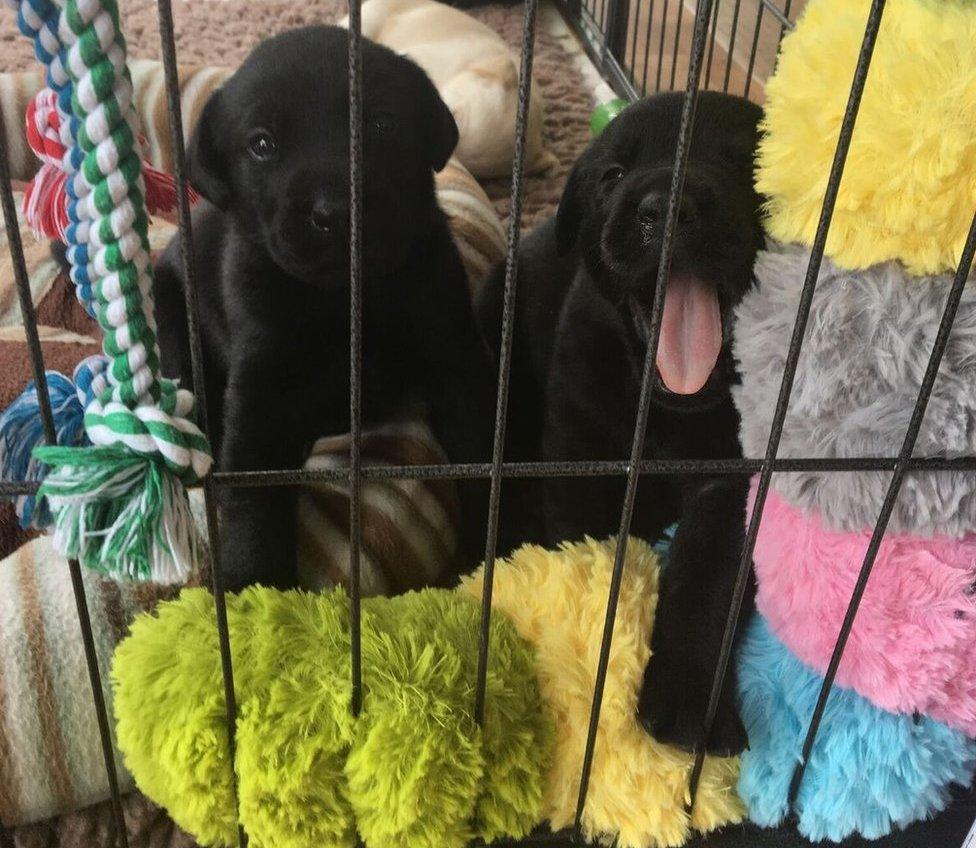

It was a hot July night when the 12 youngest children of Abby Seales made their appearance, slithering out in a 01:00 relay on my parents' kitchen floor.
Abby, aged five, half-Labrador and half-Retriever, had some typical canine symptoms during her nine-week pregnancy: A spot of morning sickness, low appetite, clinginess, and - in the final hours - panting and contractions.
You could see the spasms move across her stomach when a puppy was on its way, each one ejected in a bag of fluid. In the wild, its mother would gnaw the sack open for the pup to take its first breath. But in this case, the job of ripping it fell to her human family. Five hours and one "is it stuck?!" panic later, a dozen perfect specimens lay curled beside their mum - six girls and six boys, 11 black and one lone golden.
Why did these creatures, destined for life-changing work, enter the world in a bungalow in the Midlands instead of a high-tech vet's surgery? The answer is that it's standard practice. Every year, about 1,400-1,500 such pups are born in the UK, and Guide Dogs' 270 breeding mothers live with volunteers as full-time pets.
Abby, like the others, has never been a working guide dog - but she was marked out as breeding stock before she was born, as her parents had qualities the charity wanted to keep in the bloodline.
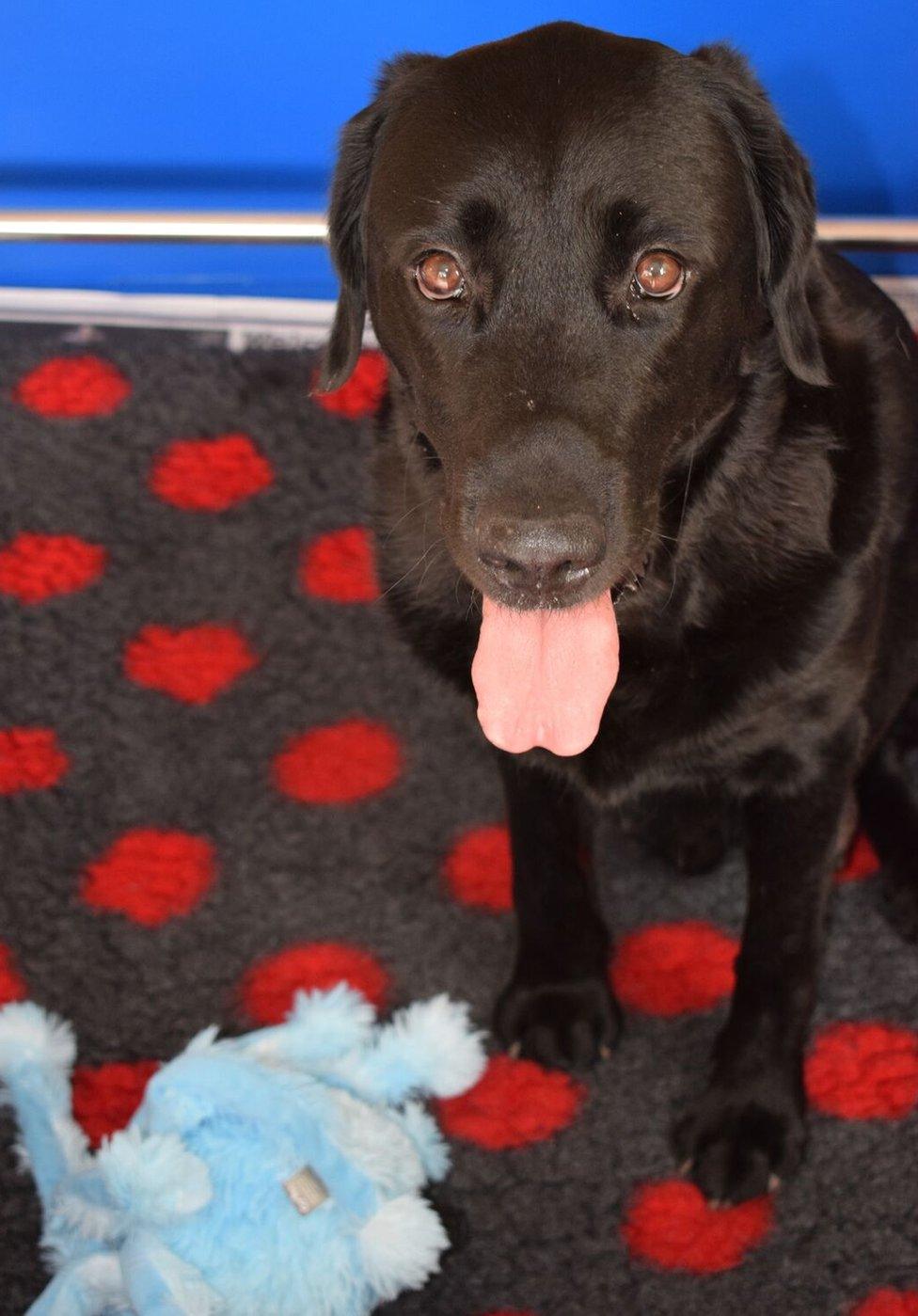
Mother Abby gave birth to 12 puppies



Before their mother dog is due to give birth, volunteers are taught how to deliver a puppy and sent the right kit - comfy, absorbent bedding, medical gloves, and a special "whelping box" where the pups will live, complete with bars round the sides to stop the mother dog from sitting on any that lie against the walls. In case of emergency, staff from Guide Dogs are on 24-hour call.
At the risk of sounding evil, Labrador puppies aren't at their cutest as newborns. They look like wrinkly hamsters. The Andrex Phase, when they lollop around irresistibly, kicks in at about five weeks.
At six weeks, we know ours will leave their mother for the Guide Dogs National Breeding Centre near Leamington Spa, where they'll have to pass a puppy profiling test - the first hurdle. Any that fail will be dropped from the guide dog programme. And what stands between these tiny squeakers and that judgement day is… just us. No pressure, right?
Even the best-behaved guide dog has to start somewhere...
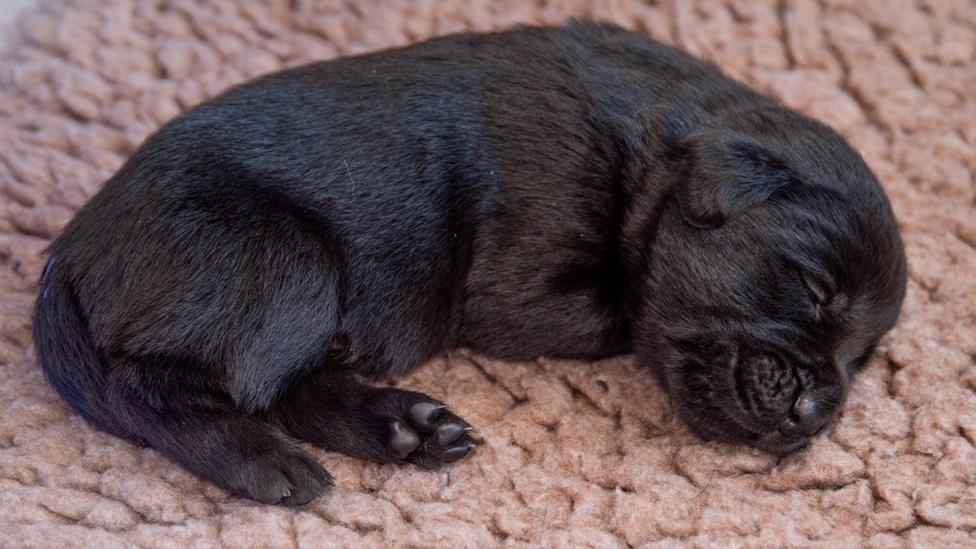

So, first things first: the pups are born soggy. They get cold very easily, so each is gently dried with a soft towel and placed under an infrared heat lamp with its mother.
As soon as one lies next to another, a problem emerges: at a few hours old, they look identical - but it's vital that we can tell them apart. Coloured collars would work, but playfighting pups can get tangled up in them. The lifesaver? Nail varnish. Each puppy gets a dab in a different place on its coat soon after birth, which its human carers use as a code.
The mark is placed where it's easy to spot - above any of the pup's legs, or at the base of its tail.
A little girl with a mark above her right foreleg would be known as "RFG" - or "right fore girl". And "LHB" would be "left hind boy" - a male puppy with a mark on his back leg.
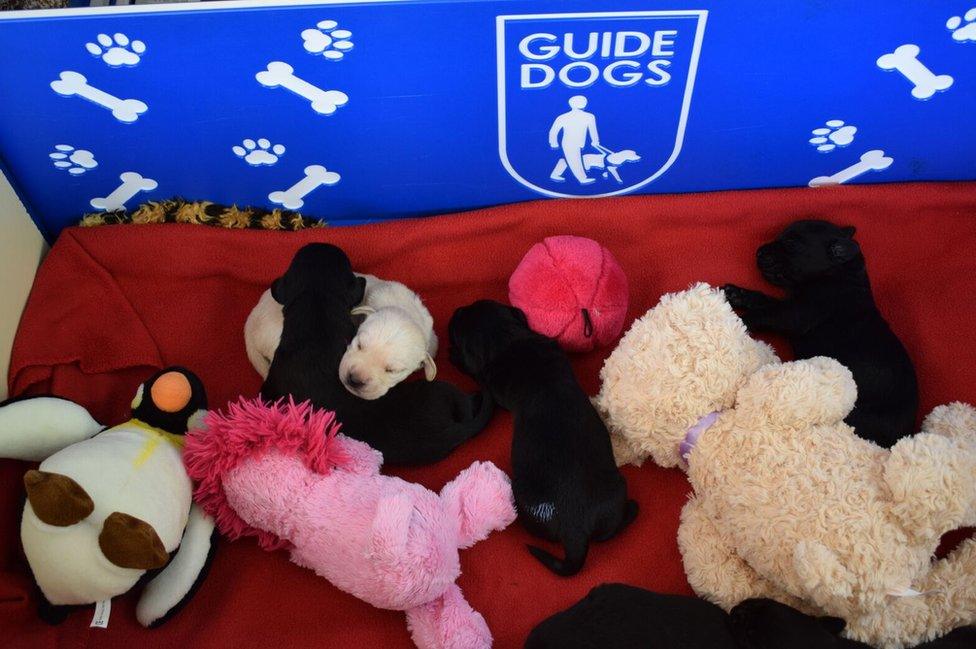

They aren't the catchiest names, it's true. Pups get their proper ones at six weeks, when they're taken to the National Breeding Centre. In the meantime, some volunteers call them all after characters in Coronation Street or Harry Potter. But in the Seales family and dozens of others, it's become almost normal to coo, "hiiiii, little right fore girrrrlllllll!" at a tiny, wriggling ball of dog.
In this litter, we made one exception: The single golden puppy in our dirty dozen was nicknamed "Mourinho" after the famous football manager Jose, who named himself "the Special One".
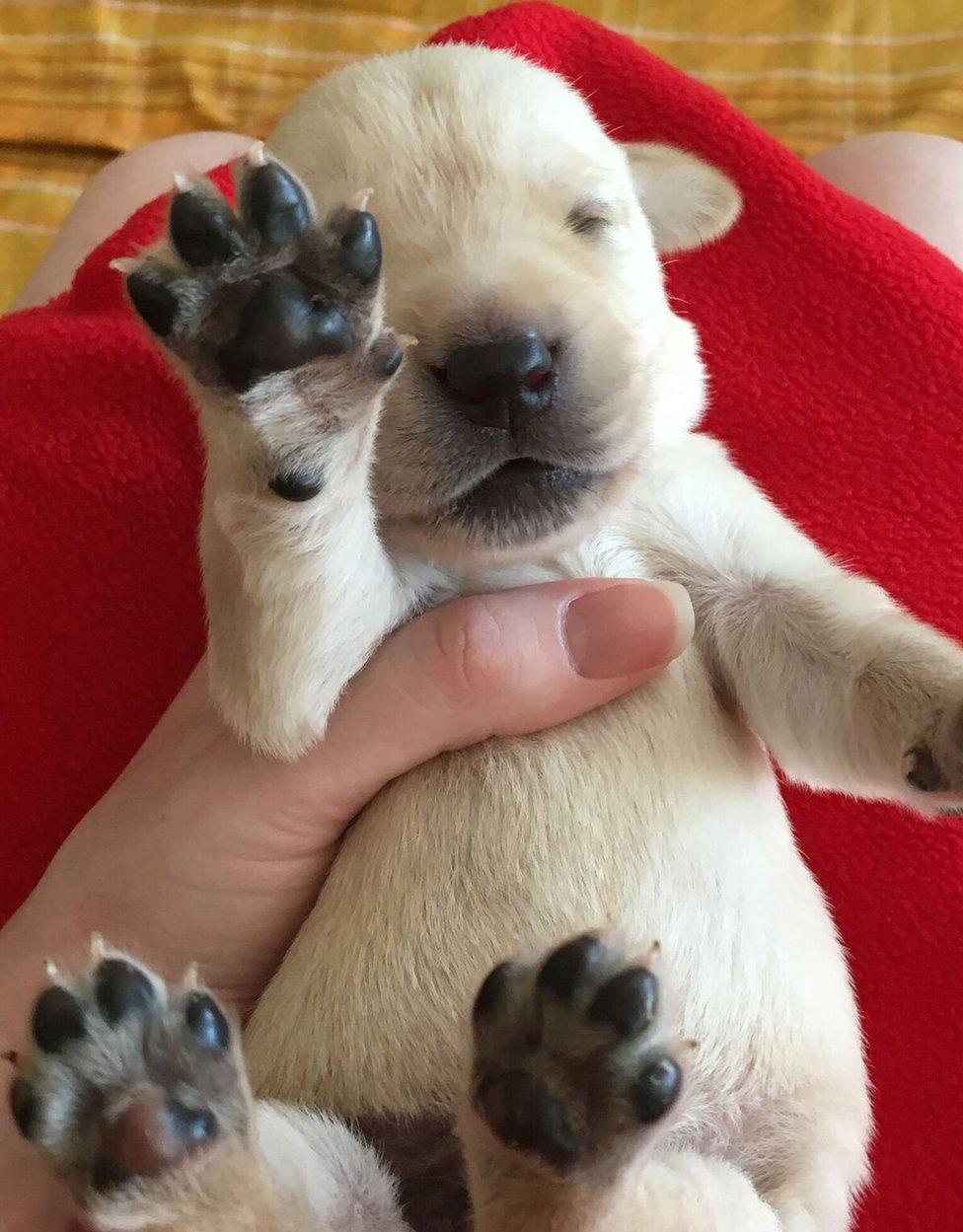

Labs are legendary for their greed, and I can confirm the instinct kicks in young. At feeding time, each one turns into a milk-seeking missile.
Between zero and two weeks old, they are functionally blind and deaf, and can't stand up - so they move around by shuffling, like seals. When not competing for a teat, they can often be seen in a "cuddle puddle" formation - nestled close to each other and their mother for comfort and warmth.


One of our littlest puppies quickly stood out because she seemed to lack the manic milk craving the rest were exhibiting. At two days old, she wasn't suckling properly and was noticeably weak and floppy.
Worse still, her weight was falling instead of rising rapidly. Puppies can deteriorate within hours at this age and we were extremely worried we might lose her.
Cradling the blanket-wrapped pup, we sought advice from Abby's brilliant "doggy midwife", Karen Stanton (formal title: "Guide Dogs Brood Bitch Supervisor"), who visited the litter every few days to check their welfare. Her verdict: hand-feed the puppy every two hours with a syringe or a baby-style bottle, and a special formula milk.
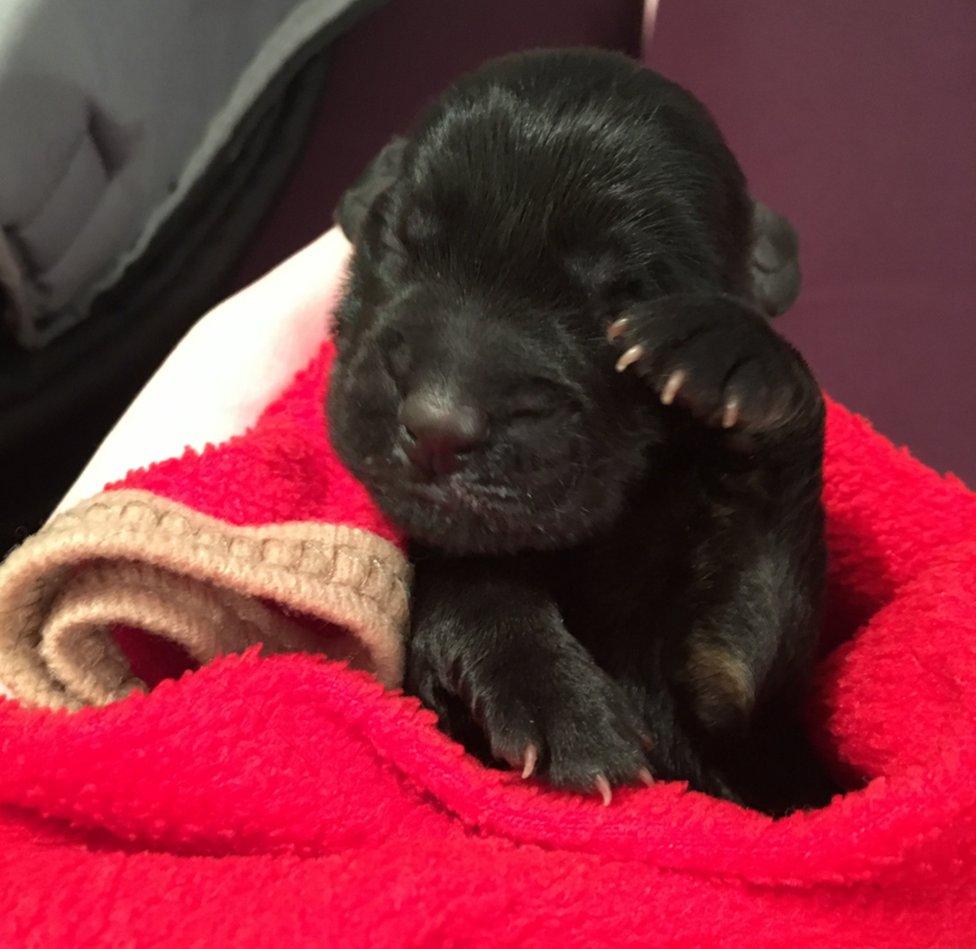
"Poorly Pup" wasn't feeding from her mother normally at two days old - a crucial time for growing puppies

I definitely can't say this was easy. Not least because at the start, "Poorly Pup" (as she became known) was close to death and could hardly hold her head up. I can, thank heaven, say it was successful. Over several weeks, milk from her mother plus additional hand-feeding eventually got her weight up to a healthy level.
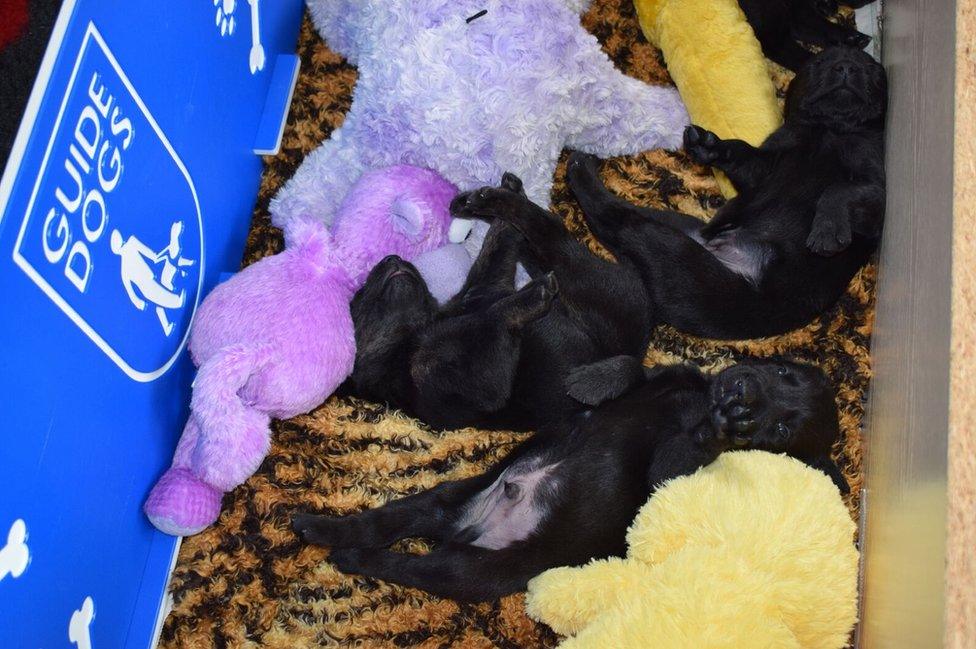

Puppies develop at an extremely rapid rate, which is both amazing and disarming to watch.
Between weeks two and three, they learn to stand, totter around like furry drunks, then walk steadily. Tails start wagging, they make a small growly noise, and playfighting breaks out everywhere.
Guide dog pups try their first solid food between weeks three and four - and mealtimes become a messy affair. The charity favours a device called the "multi-feeder", where up to six pups can eat at the same time from six separate bowls. This rarely happens, as several would rather dive feet-first into their neighbour's dinner. If they were baby people, this would be the hideous toddler feeding stage…
Luckily for our sanity, puppies also love sleep, which they pursue with the ardour of Olympians in a medal year. They also yawn more adorably than any creature yet seen on Earth.
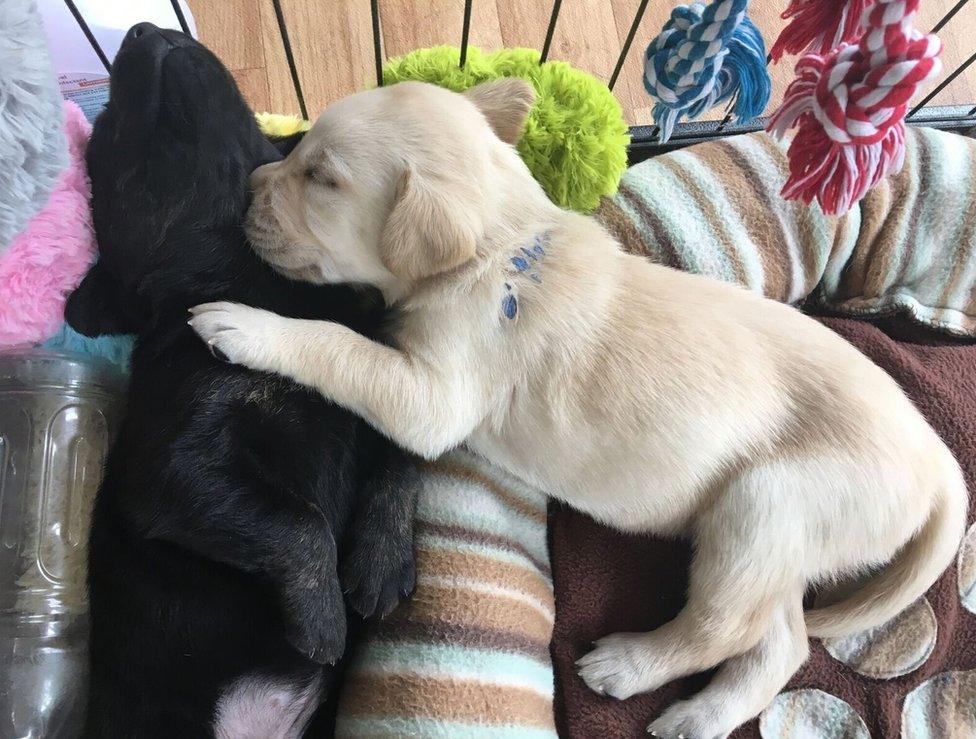

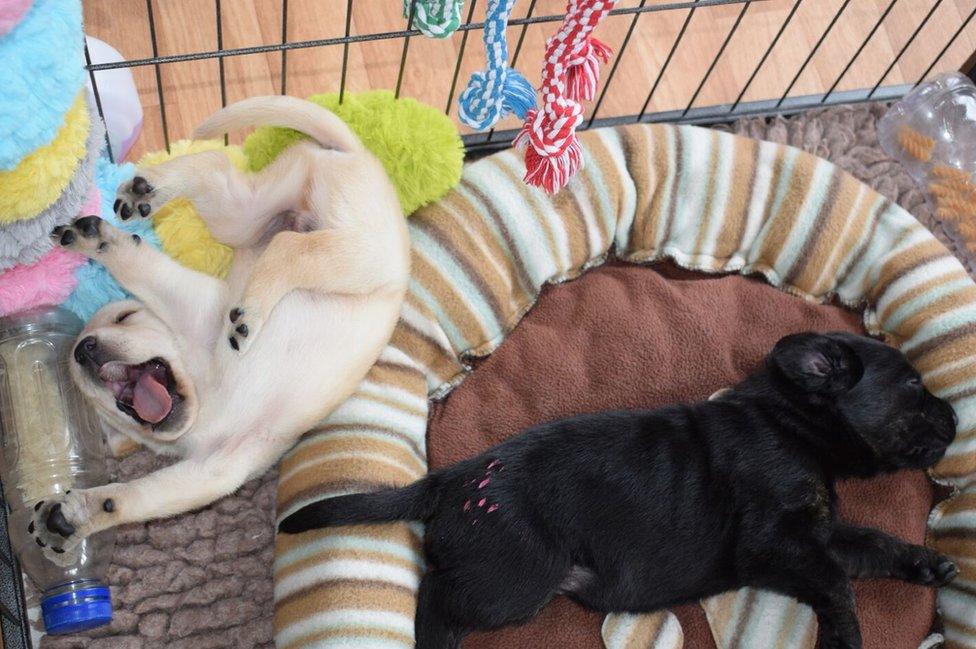



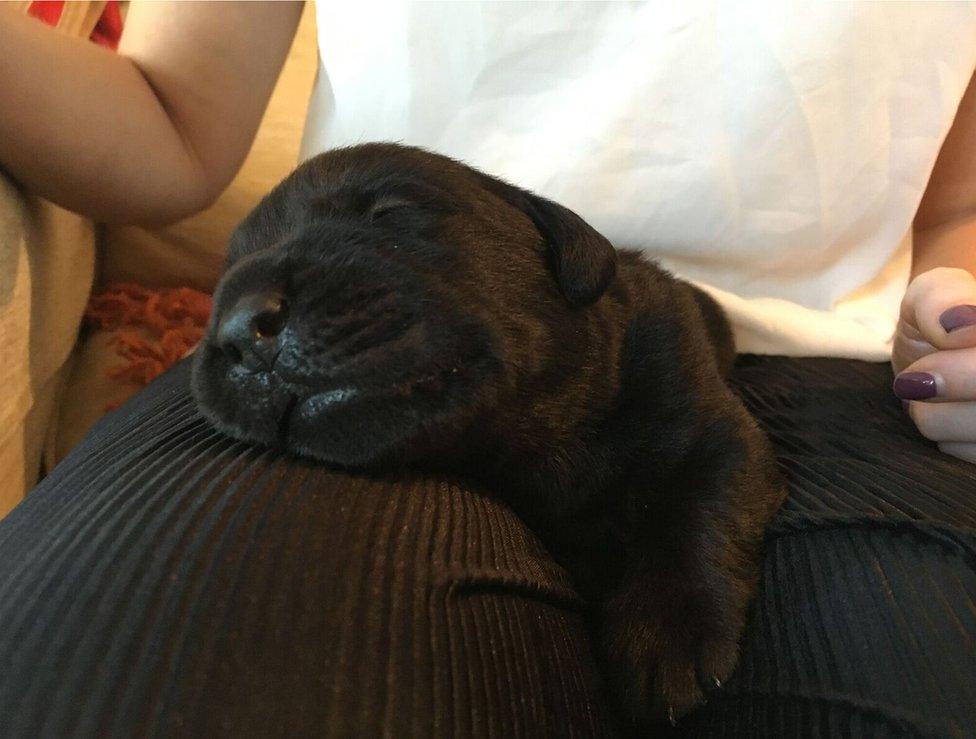

Maybe you're wondering about the weird Guns N' Roses reference at the start of this piece. Believe it or not, it wasn't (only) a clickbaity attempt to entice you in. In fact, music is part of "puppy socialisation", in which the mini hound learns to understand and interact with humans, and gets used to non-threatening noises and other goings-on.
Volunteers get a tick-list of things the pups should be introduced to - noisy toys and alarm clocks from week three, for example - and are encouraged to play them a wide variety of music. Ours got classic rock, Motown legends, a spot of Vivaldi, and some brass bands just in case their future owners like the trombone.
Since working guide dogs have to be calm about pet-spooking noises like bin trucks and thunderstorms, the charity also hands out a CD full of "bad" sounds to be introduced when they're two weeks old. (Sorry about the fireworks, little ones…)
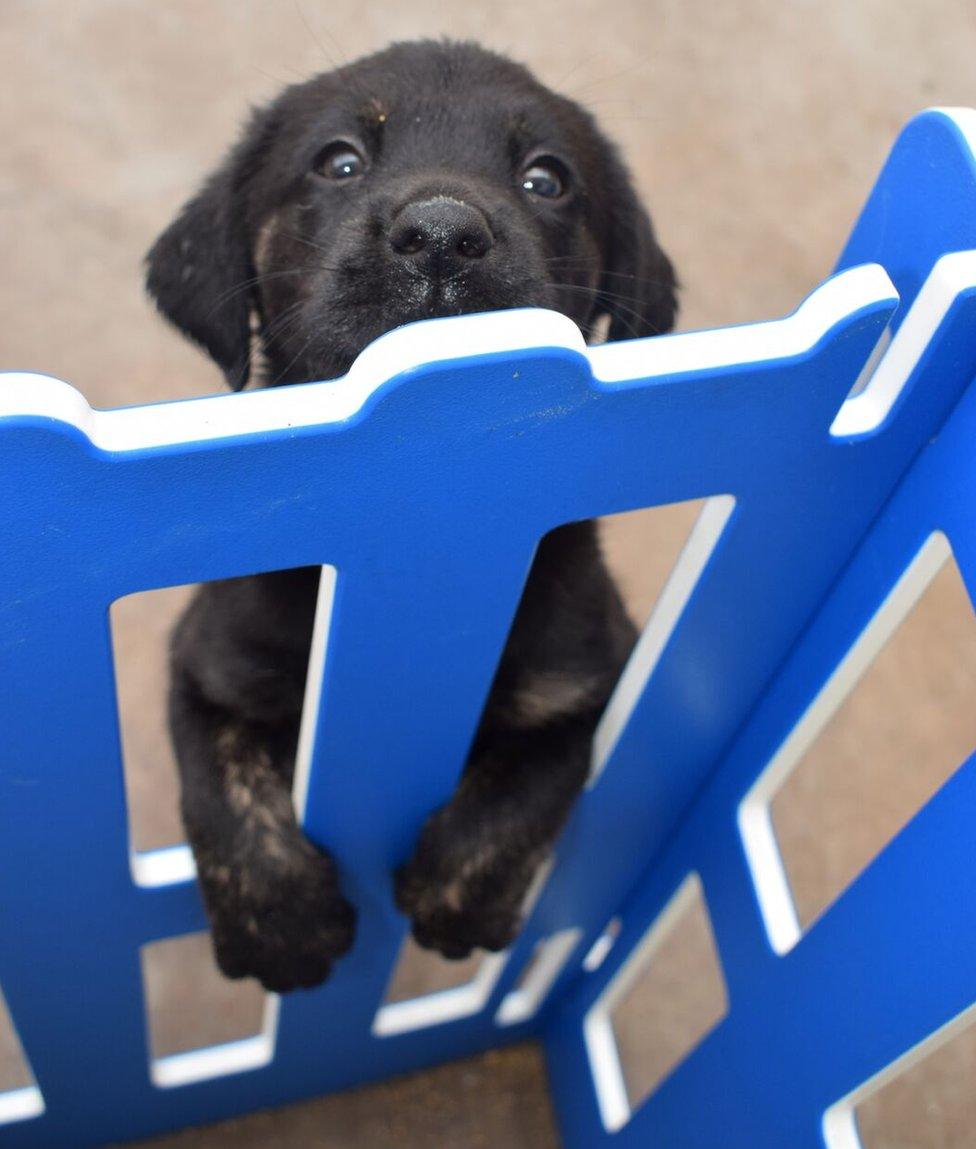

By six weeks, the rascally brood are annoying their mother with their sharp puppy teeth, and it's time for them to start the first leg of their training journey.
After many cuddles, all 12 leave at once, borne off to the National Breeding Centre, and the house feels unnaturally quiet without their squeaks, yelps and growls. At the centre, experts will test their temperaments, judging their confidence levels. It may sound brutal, but timid pups are unlikely to make good guides, and the charity deems it better not to put them through unnecessary stress.
There's still a happy ending for pups that fail the assessment, though. They will be offered to other charities whose work relies on assistance and therapy dogs. Dogs for Good, for example, trains canines to help people with disabilities. Their amazing animals can fetch items from supermarket shelves, open doors, or even help empty the washing machine.
Some pups will go to work as medical detection dogs, supporting people with serious health conditions. Someone with a life-threatening nut allergy might have a dog to sniff rooms for nut traces, for example.
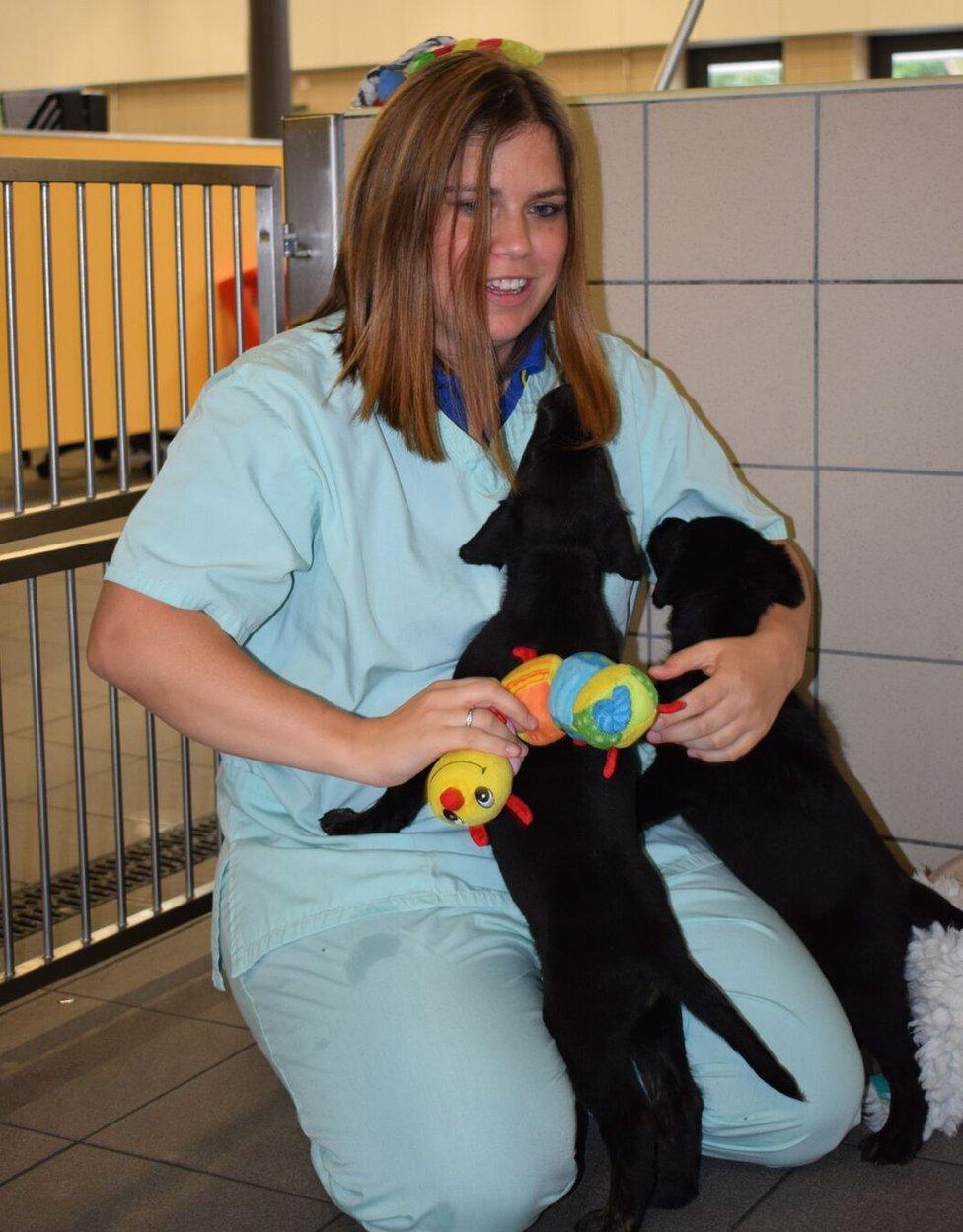
Anna Marinker, a dog care supervisor at the Guide Dogs National Breeding Centre, with two of the pups

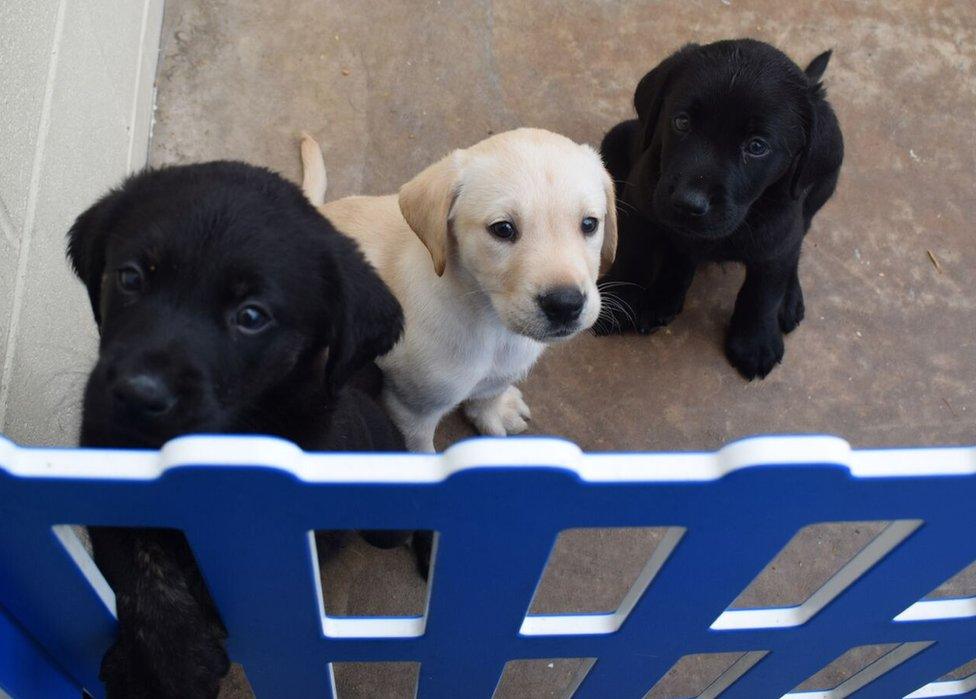

As for the pups that pass the Guide Dogs tests, they'll be sent off across the UK to live with Puppy Walkers - volunteers who look after them from the age of seven weeks, until they're 14 months old and ready to start training in earnest.
For the benefit of this story, I was allowed into the breeding centre to see our puppies one last time. I'm not convinced Poorly Pup knew who I was, but I was certainly glad to see her again - curious, healthy, and on the verge of a new adventure.
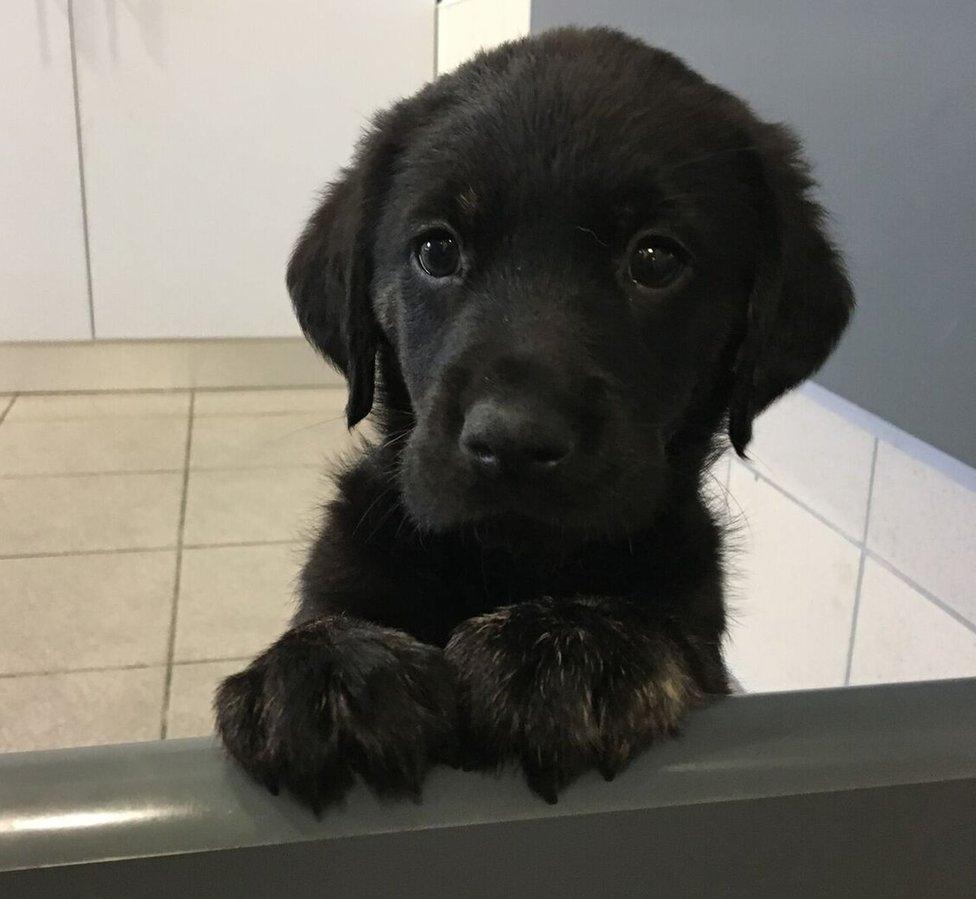

Every year in the UK, 850 new guide dogs are carefully matched with blind or partially sighted owners. In many cases, it's a life-changing partnership.
To our absolute joy, this whole litter passed their puppy assessment tests, so they're all in the running to join them.


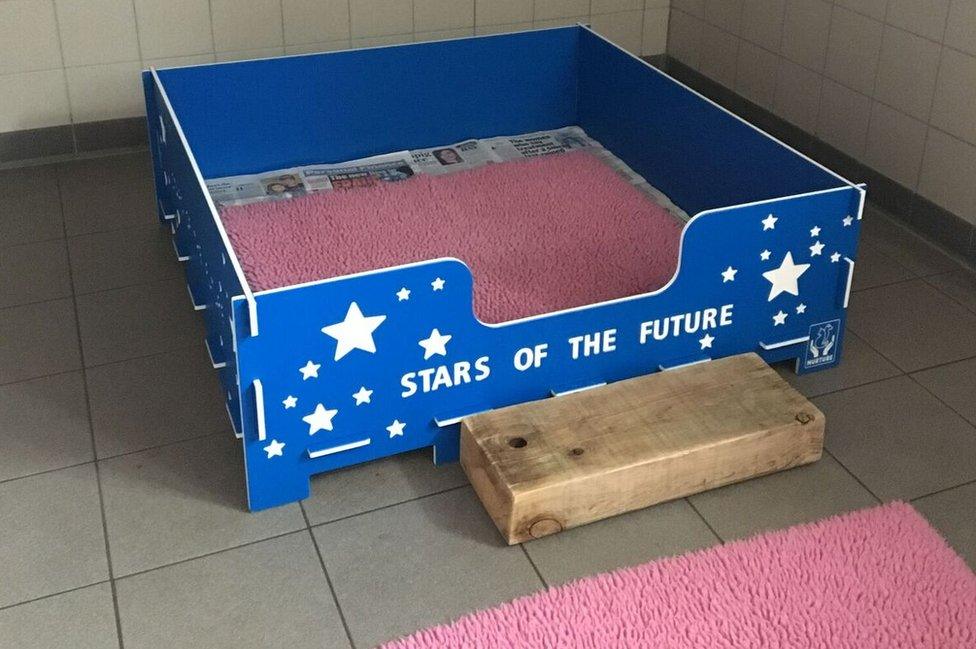

All pictures subject to copyright
- Published2 July 2013
